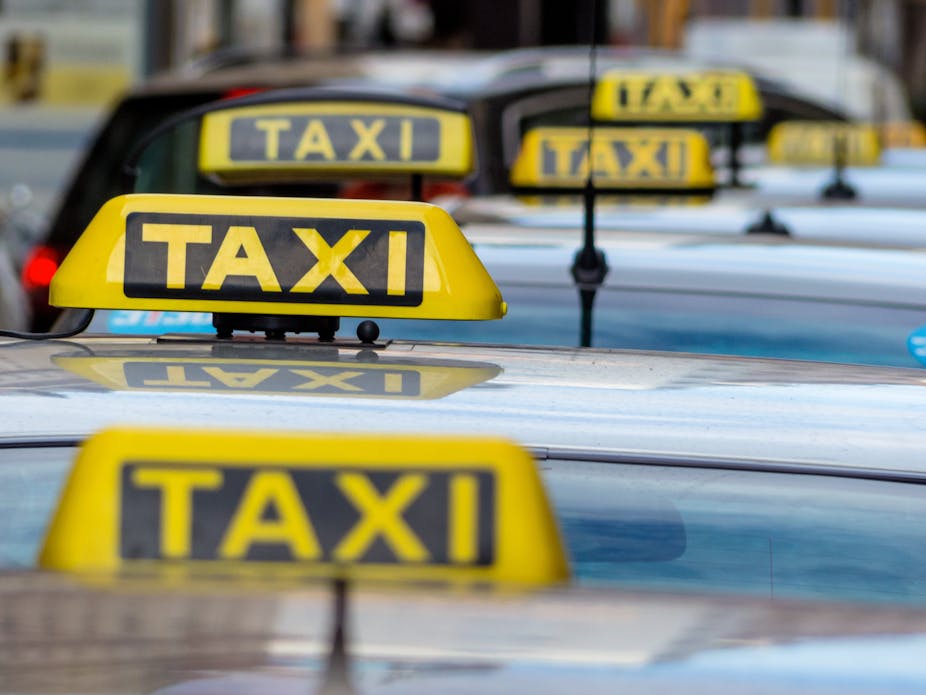Popular cab-hailing service Uber seems as accident-prone as ever, attracting criticism for quadrupling its rate to a minimum of $100 during the Sydney siege hostage situation. Having been criticised in several countries for its unregulated operation and irresponsible business practices, now people are questioning the firm’s ethics too.
This rate hike is the norm under its surge pricing model, where prices increase in line with demand. In a tweet posted during the siege, the company initially defended itself, saying the higher fare was necessary to encourage more drivers to pick up passengers and meet the demand.
The social media frenzy that followed suggests the public remains unconvinced by the firm’s explanation. Uber was accused of price-gouging and “siege pricing”. There may be reason to question Uber’s intentions if we take into consideration that this is not the first time the company has faced this sort of situation: prices also doubled during Hurricane Sandy in 2012.
After criticism of hiking prices during a natural disaster, Uber announced it would cap prices during emergencies – but that policy wasn’t applied to the recent events in Sydney.
Within an hour of its initial message, Uber backed down, apologised to its customers, and offered refunds, discounts and free rides. But in the long run, this kind of action after the fact isn’t going to work for Uber.
From surge pricing to siege pricing
Uber’s surge pricing has been a bone of contention for some time. During New Year’s Eve 2012, rates in New York City went as high as eight times the standard rate. Although the rates are displayed within the app before the ride is requested, which allows commuters to cancel their taxi request if they consider the price is too high, Uber’s customers still blamed the firm for price gouging.
According to Uber the aim of this pricing strategy is to increase the number of drivers working with them, which in turn reduces rates and ensures reliability during peak times. The surge pricing approach is a version of dynamic pricing, a strategy which allows prices to vary depending on the time, number of customers and other circumstances.
While the concept is not new, it has recently re-emerged due to advancing technology and share economy models such as Airbnb. The idea is that, since customers pay higher prices due to high demand for Uber’s services, more drivers join Uber – resulting in lower prices and less waiting time for customers overall. This then leads to more customers, which in turn leads to reduced waiting time between fares for drivers.
Dynamic pricing has been used for many years in sectors such as airlines and hotels – and its importance for increasing network effects has been acknowledged in the scientific literature. Up till now, use of dynamic pricing in public transportation has been controversial, with public transport dominated by fixed-price buses, subways and trains. The business model is also a new arrival in a taxi service and so different from what customers consider the norm. While Uber’s high peak-time prices may be seen as price gouging leading to customers losing loyalty, some research suggests that consumer scepticism and perceptions of unfair pricing may stem from a lack of understanding of the marketplace.
Time to shape up, Uber
The retrospective apologies – rather than pre-emptive plans to prevent ethical issues that could be easily avoided – is a common theme with Uber. But the strategy is not sustainable. Backlash from the Sydney siege and Sandy incidents show that Uber’s pricing strategy is seen as exploitative.
This can make customers feel they are being treated unfairly, something that can have long-term effects on their willingness to use the service. People will gather information to reach an impression of how fairly they feel they are being treated, form a judgement and act accordingly in the future. So despite Uber arguing that extremely high prices occur only rarely, the resulting fallout on its customers and would-be customers are likely to be more substantial.
In an increasingly competitive market, isn’t it better if innovative technology is used to encourage responsible and fair business practices? Better that than to risk going under as regulators tighten their grip and customers turn their backs on you.

